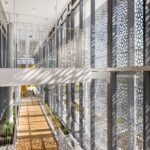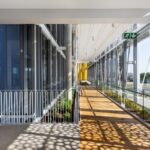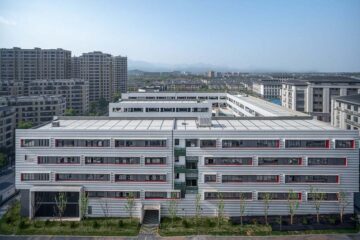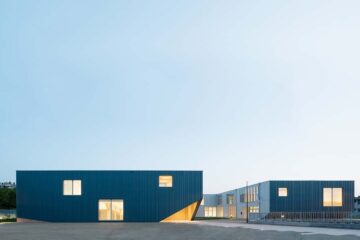Redefining the Campus: Ocean Sciences Campus Extensions NMU

The Ocean Sciences Campus Extensions at Nelson Mandela University (NMU), envisioned by SVA International, aim to reinvigorate the campus identity while providing cutting-edge academic facilities. The project includes a new entrance building and dedicated academic spaces within a specialized research environment.

Design Concept
The building design centers around a grand internal veranda, serving as the main circulation spine while connecting public and private spaces. A triple-volume, multi-layered foyer space sets the tone, housing research areas, laboratories, offices, and meeting spaces. Notably, an eight-meter-deep diving tank, integrated into the western façade, doubles as a training facility and architectural feature.
Architectural Features
A three-dimensional sun-screen layer enhances the façade, casting dynamic shadow patterns throughout the day. The structural composition combines exposed concrete and steel, creating a rhythmic aesthetic within the foyer. Integrating the dive tank into the façade presented structural and circulation challenges but adds character to the building.
Sustainability and User Engagement
Internally, the building incorporates landscaping and passive design elements to create a vibrant, user-friendly environment. Visitors and occupants can interact with the space on multiple levels, fostering engagement and connection. Carefully selected finishes balance durability with a contemporary aesthetic, reflecting the institution’s forward-thinking ethos.

Landscape Integration
External landscaping enhances the building’s edges, providing inviting spaces for interaction and engagement. Amidst utilitarian structures from the 1970s, the new building stands out as a visual landmark, establishing a clear identity within the campus.
Conclusion
The Ocean Sciences Campus Extensions at NMU by SVA International redefine the campus landscape, blending functionality with architectural innovation. Through thoughtful design and integration, the project not only meets academic needs but also creates a dynamic hub for learning, research, and collaboration.































